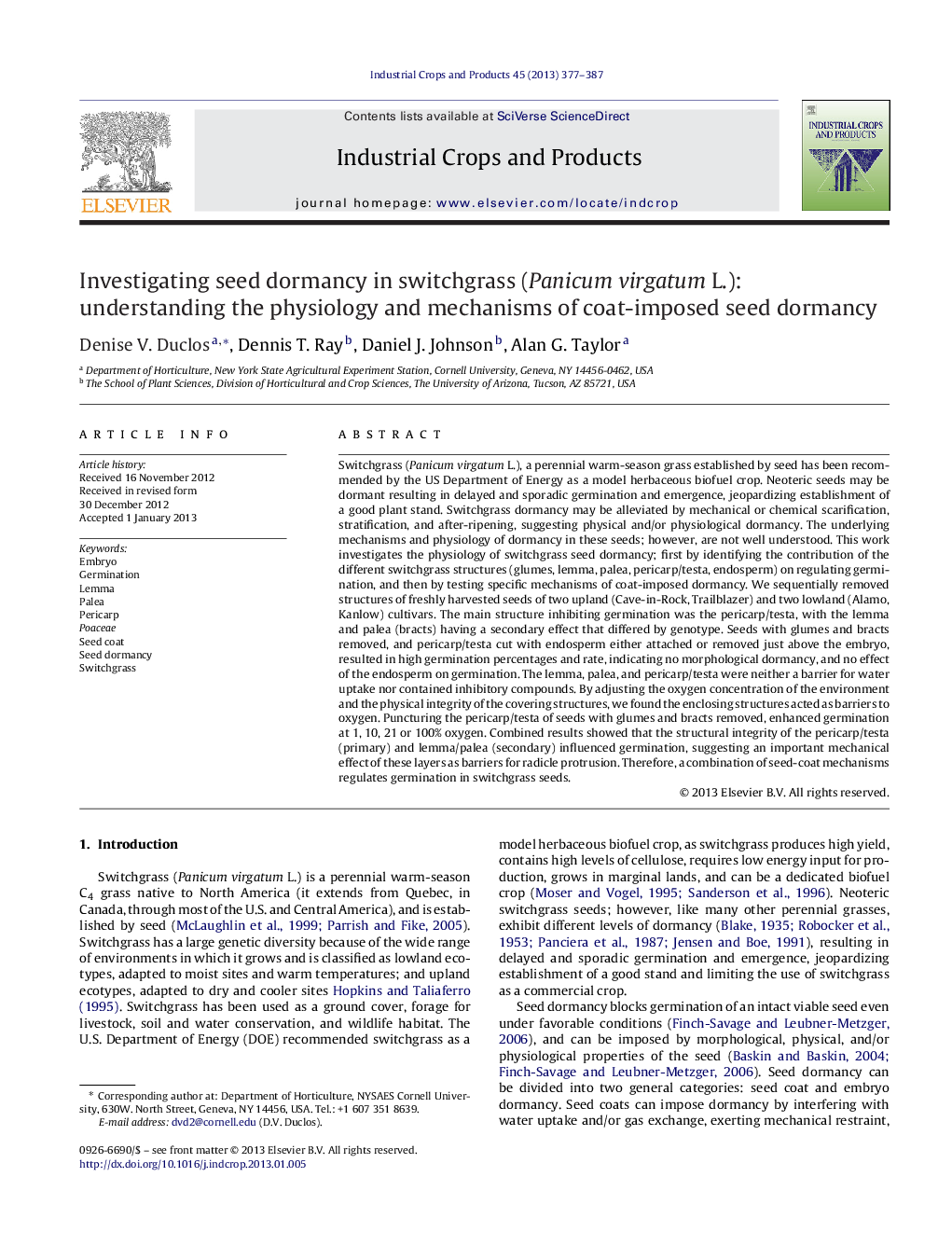| کد مقاله | کد نشریه | سال انتشار | مقاله انگلیسی | نسخه تمام متن |
|---|---|---|---|---|
| 4514063 | 1624864 | 2013 | 11 صفحه PDF | دانلود رایگان |

Switchgrass (Panicum virgatum L.), a perennial warm-season grass established by seed has been recommended by the US Department of Energy as a model herbaceous biofuel crop. Neoteric seeds may be dormant resulting in delayed and sporadic germination and emergence, jeopardizing establishment of a good plant stand. Switchgrass dormancy may be alleviated by mechanical or chemical scarification, stratification, and after-ripening, suggesting physical and/or physiological dormancy. The underlying mechanisms and physiology of dormancy in these seeds; however, are not well understood. This work investigates the physiology of switchgrass seed dormancy; first by identifying the contribution of the different switchgrass structures (glumes, lemma, palea, pericarp/testa, endosperm) on regulating germination, and then by testing specific mechanisms of coat-imposed dormancy. We sequentially removed structures of freshly harvested seeds of two upland (Cave-in-Rock, Trailblazer) and two lowland (Alamo, Kanlow) cultivars. The main structure inhibiting germination was the pericarp/testa, with the lemma and palea (bracts) having a secondary effect that differed by genotype. Seeds with glumes and bracts removed, and pericarp/testa cut with endosperm either attached or removed just above the embryo, resulted in high germination percentages and rate, indicating no morphological dormancy, and no effect of the endosperm on germination. The lemma, palea, and pericarp/testa were neither a barrier for water uptake nor contained inhibitory compounds. By adjusting the oxygen concentration of the environment and the physical integrity of the covering structures, we found the enclosing structures acted as barriers to oxygen. Puncturing the pericarp/testa of seeds with glumes and bracts removed, enhanced germination at 1, 10, 21 or 100% oxygen. Combined results showed that the structural integrity of the pericarp/testa (primary) and lemma/palea (secondary) influenced germination, suggesting an important mechanical effect of these layers as barriers for radicle protrusion. Therefore, a combination of seed-coat mechanisms regulates germination in switchgrass seeds.
► Pericarp/testa: main role inhibiting germination in upland and lowland switchgrass ecotypes.
► Lemma and palea played a secondary role, differing by genotype.
► Excised embryos germinated readily; endosperm did not limit germination.
► Seed coat was not a barrier for water uptake or a source of inhibitors.
► Enclosing structures interfered with oxygen availability and radicle protrusion.
Journal: Industrial Crops and Products - Volume 45, February 2013, Pages 377–387